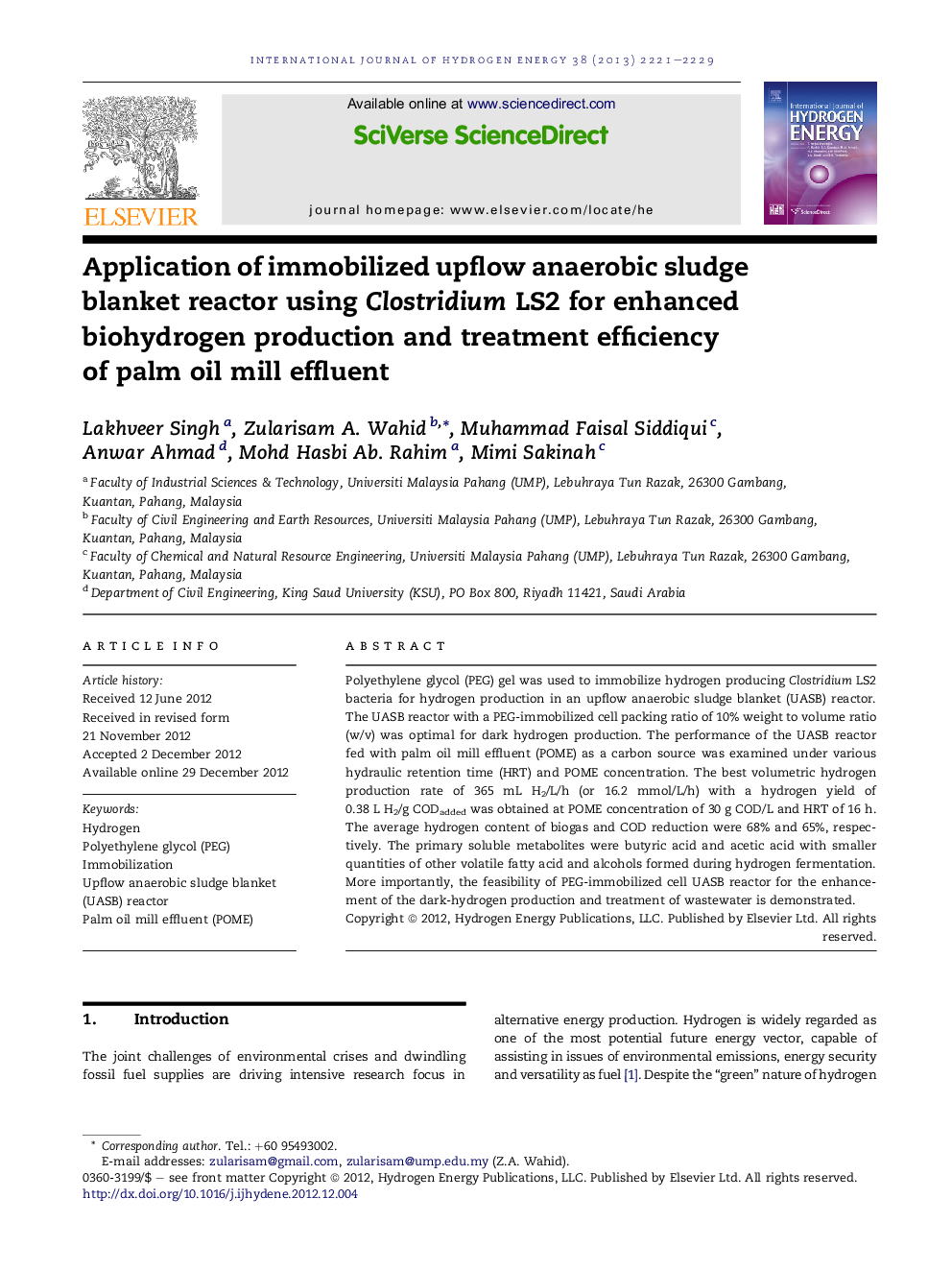| Article ID | Journal | Published Year | Pages | File Type |
|---|---|---|---|---|
| 1274085 | International Journal of Hydrogen Energy | 2013 | 9 Pages |
Polyethylene glycol (PEG) gel was used to immobilize hydrogen producing Clostridium LS2 bacteria for hydrogen production in an upflow anaerobic sludge blanket (UASB) reactor. The UASB reactor with a PEG-immobilized cell packing ratio of 10% weight to volume ratio (w/v) was optimal for dark hydrogen production. The performance of the UASB reactor fed with palm oil mill effluent (POME) as a carbon source was examined under various hydraulic retention time (HRT) and POME concentration. The best volumetric hydrogen production rate of 365 mL H2/L/h (or 16.2 mmol/L/h) with a hydrogen yield of 0.38 L H2/g CODadded was obtained at POME concentration of 30 g COD/L and HRT of 16 h. The average hydrogen content of biogas and COD reduction were 68% and 65%, respectively. The primary soluble metabolites were butyric acid and acetic acid with smaller quantities of other volatile fatty acid and alcohols formed during hydrogen fermentation. More importantly, the feasibility of PEG-immobilized cell UASB reactor for the enhancement of the dark-hydrogen production and treatment of wastewater is demonstrated.
► PEG was used to entrap Clostridium LS2 for hydrogen production from POME. ► Effect of packing ratio of PEG immobilized cells was tested in UASB reactor for hydrogen production. ► Evaluate the efficiency of immobilized UASB reactor for hydrogen production at different HRT. ► Effect of different POME concentration on hydrogen production in immobilized UASB reactor.
